Directory Enumeration is a cybersecurity technique used to discover hidden directories and files on a web server. It involves scanning a website or application to identify publicly accessible directories that may contain sensitive information, misconfigured settings, or security vulnerabilities.
Attackers and penetration testers use directory enumeration to find hidden admin panels, backup files, configuration files, and unprotected resources that may lead to unauthorized access or data exposure. This process is commonly performed using automated tools and wordlists containing common directory names.
Directory enumeration relies on systematically guessing and requesting potential directory names within a web server’s file structure. If the server does not properly restrict access, it may reveal hidden or sensitive directories.
The general process includes:
Attackers or ethical hackers first select a target domain or IP address for enumeration. This is often preceded by information gathering and reconnaissance to understand the web server and technologies in use.
Automated scripts or manual techniques attempt to access common directory paths by making HTTP requests such as:
https://example.com/admin/ <br>https://example.com/backup/ <br>https://example.com/config/ <br>https://example.com/uploads/ <br>If a directory exists and is not properly restricted, the server may respond with HTTP status codes that reveal its existence.
Web servers return specific HTTP response codes when a request is made to an existing or non-existing directory:
These responses help determine which directories are present and whether they are accessible or protected.
If a directory is accessible, attackers may attempt to list files within it or find exposed credentials, configuration files, database backups, or logs.
Certain directories are frequently targeted during directory enumeration because they may contain sensitive files. Some common ones include:
Several tools are widely used for automated directory enumeration, including:
Directory enumeration poses significant risks to web applications, especially if sensitive directories are not properly secured.
To protect web applications from directory enumeration attacks, organizations should implement security best practices.
By default, some web servers allow directory listing, exposing all files inside a folder. This can be disabled using:
Options -Indexes<br>autoindex off;<br>Use server configuration files to restrict access to sensitive directories like /admin/, /config/, and /logs/.
<Directory "/var/www/html/admin"><br> Require all denied<br></Directory><br>Directory enumeration is a cybersecurity technique used to discover hidden directories and files on a web server. It helps identify unprotected resources, misconfigured settings, or sensitive data that could be exploited by attackers.
Directory enumeration works by systematically guessing and requesting directory names on a web server. Automated tools send HTTP requests to check for the existence of common directories such as /admin/, /backup/, and /config/. The server’s response (e.g., 200 OK, 403 Forbidden, or 404 Not Found) indicates whether the directory exists and is accessible.
Directory enumeration can expose sensitive information and security weaknesses, leading to risks such as:
Several tools are commonly used for directory enumeration, including:
Organizations can protect against directory enumeration by:
Click the Copy to Clipboard button and paste into your web page to automatically add this blog content to your website
Content Copyright(c) 2024, ITU Online, LLC. Permission is granted to embed but not copy content in this blog. ITU Online, LLC reserves the right to modify or remove this content at any time.
Lorem ipsum dolor sit amet, consectetur adipiscing elit. Ut elit tellus, luctus nec ullamcorper mattis, pulvinar dapibus leo.
$49.99 Original price was: $49.99.$16.99Current price is: $16.99. / month with a 10-day free trial
Click the Copy to Clipboard button and paste into your web page to automatically add this blog content to your website
Content Copyright(c) 2024, ITU Online, LLC. Permission is granted to embed but not copy content in this blog. ITU Online, LLC reserves the right to modify or remove this content at any time.
ENDING THIS WEEKEND: Train for LIFE at our lowest price. Buy once and never have to pay for IT Training Again.

Get ready for the updated 220-1201 & 220-1202 exams with our brand-new CompTIA A+ training—designed to help you pass with confidence and start your IT career strong. Access this course and over 2,900 hours of expert-led IT training when you sign up for any of our All-Access Passes. Don’t miss out—enroll now and start learning today!